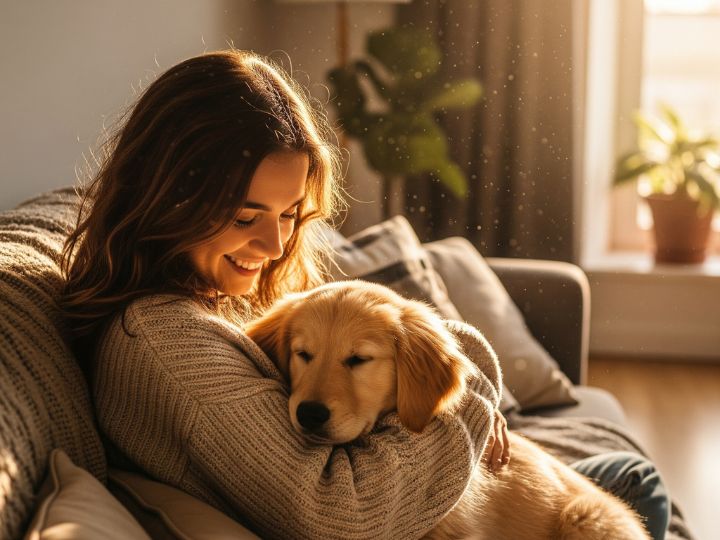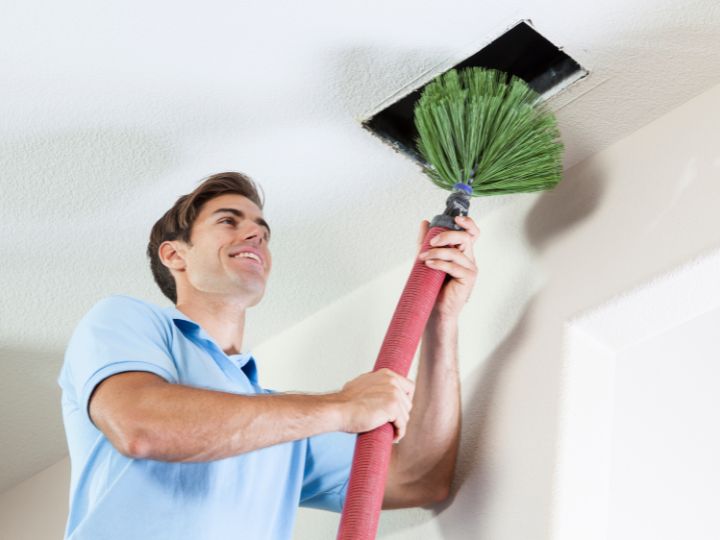Table of Contents
To improve IAQ in pet-friendly homes, regularly groom pets, use HEPA filters, vacuum often with a sealed system, and ventilate effectively. These actions reduce dander, hair, and allergens, keeping your indoor air clean and healthy for everyone.
Key Takeaways:
- Groom pets frequently to reduce shedding and dander
- Use HEPA air purifiers and filters
- Vacuum with a sealed system regularly
- Ensure proper home ventilation
- Clean bedding, furniture, and floors consistently
Maintaining optimal indoor air quality in homes with pets is not only essential for human health but also for the well-being of our furry companions. Pets shed dander, hair, and carry in outdoor allergens, making it critical to implement smart air quality strategies. In this comprehensive guide, we provide advanced and effective tips to significantly enhance the air quality in pet-friendly homes.
Why Indoor Air Quality Matters in Pet-Friendly Homes

Indoor air pollution tends to be higher in homes with pets due to excess dander, fur, and airborne allergens. According to the American Lung Association, pet dander is one of the leading indoor allergens, often aggravating respiratory conditions such as asthma and allergic rhinitis.
Poor IAQ affects:
- Children and seniors with sensitive immune systems
- Allergy and asthma sufferers
- Pets prone to respiratory issues
By improving indoor air quality, you’re ensuring a cleaner, safer, and more comfortable environment for the entire household—including your furry family members.
Invest in a High-Efficiency HEPA Air Purifier
A HEPA-certified air purifier captures up to 99.97% of airborne particles as small as 0.3 microns. This includes:
- Pet dander and fur
- Mold spores and pollen
- Dust mites and odors
Expert Tip: Choose a model with an activated carbon filter for additional odor elimination. According to the EPA’s Guide to Air Cleaners in the Home, air purifiers should be appropriately sized to the room and used consistently for maximum efficiency.
🌀 Place purifiers in high-traffic and pet-frequented areas. Replace filters per manufacturer guidelines.
Clean HVAC Filters Frequently
Your HVAC system circulates air throughout your home, so its filter quality directly impacts IAQ.
- Change filters every 30–60 days in homes with pets
- Upgrade to electrostatic or pleated filters for improved particulate capture
- Schedule annual HVAC maintenance for peak system performance
Trusted HVAC Service Tip: For reliable upkeep, work with professionals like HVAC Alliance Expert—a reputable provider known for pet-friendly home solutions.
Bathe and Groom Pets Regularly
Controlling allergens starts with your pets.
- Brush pets outdoors to minimize indoor hair spread
- Bathe monthly or as advised by your vet
- Use pet-safe grooming wipes between baths
🧴 A clean pet = cleaner air. Frequent grooming means fewer allergens in your upholstery, carpets, and air.
Vacuum Often Using a HEPA-Filtered Vacuum Cleaner
Standard vacuums may release trapped allergens back into the air. Instead, use a sealed HEPA vacuum to trap and retain:
- Pet fur and dander
- Dust mites
- Fine particulate matter from shoes and paws
🧹 Vacuum 2–3 times a week, focusing on carpets, rugs, and furniture. Don’t forget baseboards and under furniture.
Wash Pet Bedding and Fabric Surfaces Regularly
Allergens build up in soft materials over time.
Action Plan:
- Wash pet bedding weekly in hot water
- Clean human bedding, curtains, and throws biweekly
- Use hypoallergenic, fragrance-free detergent
This not only improves air freshness but also promotes skin health for pets and humans alike.
Use Natural Air Fresheners Instead of Synthetic Sprays
Avoid chemical-based air fresheners, which can contain Volatile Organic Compounds (VOCs) that degrade IAQ.
✅ Pet-safe odor neutralizers include:
- Baking soda
- Activated charcoal
- White vinegar
- Vet-approved essential oils (e.g., lavender, chamomile)
Pro Tip: Always consult your vet before using any scented product around pets.
Maintain Ideal Indoor Humidity (30%–50%)
Balanced humidity reduces:
- Dust mites
- Pet dander circulation
- Mold growth
💧 Use a hygrometer to monitor humidity levels. Dehumidifiers or humidifiers can help keep your air balanced year-round.
Create Pet-Free Zones for Better Sleep and Breathing
Designating pet-free areas—especially bedrooms—can drastically reduce allergen exposure while you sleep.
🚫 Use gates or pet training to keep specific rooms off-limits.
🛌 Consider using air purifiers in these zones for added cleanliness.
Choose Air-Purifying, Pet-Safe Houseplants
Plants act as natural air filters—just make sure they’re safe for your furry friends.
Recommended plants include:
- Spider Plant
- Areca Palm
- Boston Fern
- Bamboo Palm
❌ Avoid toxic plants like aloe vera, lilies, and philodendrons.
Deep Clean Carpets and Upholstery Every 2–3 Months
Carpets trap microscopic allergens. If you’re not steam-cleaning regularly, you’re letting dander build up.
- Steam clean carpets or area rugs quarterly
- Hire professional upholstery cleaners
- Replace wall-to-wall carpet with hard flooring where possible
Limit Exposure to VOCs in Pet-Friendly Homes
Volatile Organic Compounds (VOCs) from cleaners, paint, and plastics harm both air quality and health.
🌿 Choose:
- VOC-free or low-VOC paints
- Eco-labeled, pet-safe cleaning products
- Sealed storage for all chemicals
Reducing VOCs protects both your pet’s lungs and your own.
Regularly Clean Air Ducts to Prevent Allergen Circulation

Pet hair, mold, and debris can accumulate in your HVAC ducts.
Hire licensed professionals to inspect and clean your ducts every 1–5 years. Relying on expert air duct cleaning services ensures a healthier indoor environment and optimal system performance.
Bonus Tip: Clean vents and grilles monthly. Install in-duct filters for even more protection.
Monitor Indoor Air Quality with Smart Devices
Technology makes it easy to track and adjust your indoor air quality in real time.
📱 Smart monitors can:
- Detect airborne allergens and VOCs
- Track humidity and temperature
- Send alerts when IAQ drops
Some systems can even trigger HVAC or purifier adjustments automatically.
Conclusion
Keeping your home fresh and breathable for both you and your pets is more achievable than ever with the right approach. From using HEPA filters and grooming your pets often to deep-cleaning carpets and limiting harmful chemicals, every effort you make adds up to cleaner, healthier air. These strategies don’t just reduce allergens—they also contribute to a more comfortable and inviting space for your entire household.
If you’re noticing persistent air quality issues or need help maintaining your HVAC system, don’t wait. Call the trusted professionals at HVAC Alliance Experts for expert solutions tailored to your home. When searching for HVAC service near me, know that quality care is just one call away.
FAQs
In homes with pets, HVAC filters should be replaced or cleaned every 1 to 2 months. This helps prevent the buildup of pet hair and dander that can strain your system and reduce air quality.
Some essential oils can be toxic to pets, so it’s important to use only vet-approved, pet-safe options like lavender or chamomile. Always diffuse in well-ventilated areas and monitor your pet for any signs of discomfort.
Yes, certain houseplants like spider plants and areca palms can naturally filter toxins and improve air quality. Just be sure to choose non-toxic plants that are safe for your specific type of pet.
Common signs include frequent allergies, pet odor, excessive dust buildup, and respiratory discomfort. Using a smart indoor air quality monitor can give you real-time data on pollutants, humidity, and VOCs.
Yes, because air ducts can still collect pet hair, dust, and allergens that circulate throughout your home. Cleaning ducts every 3–5 years complements the use of purifiers and improves overall system efficiency.


